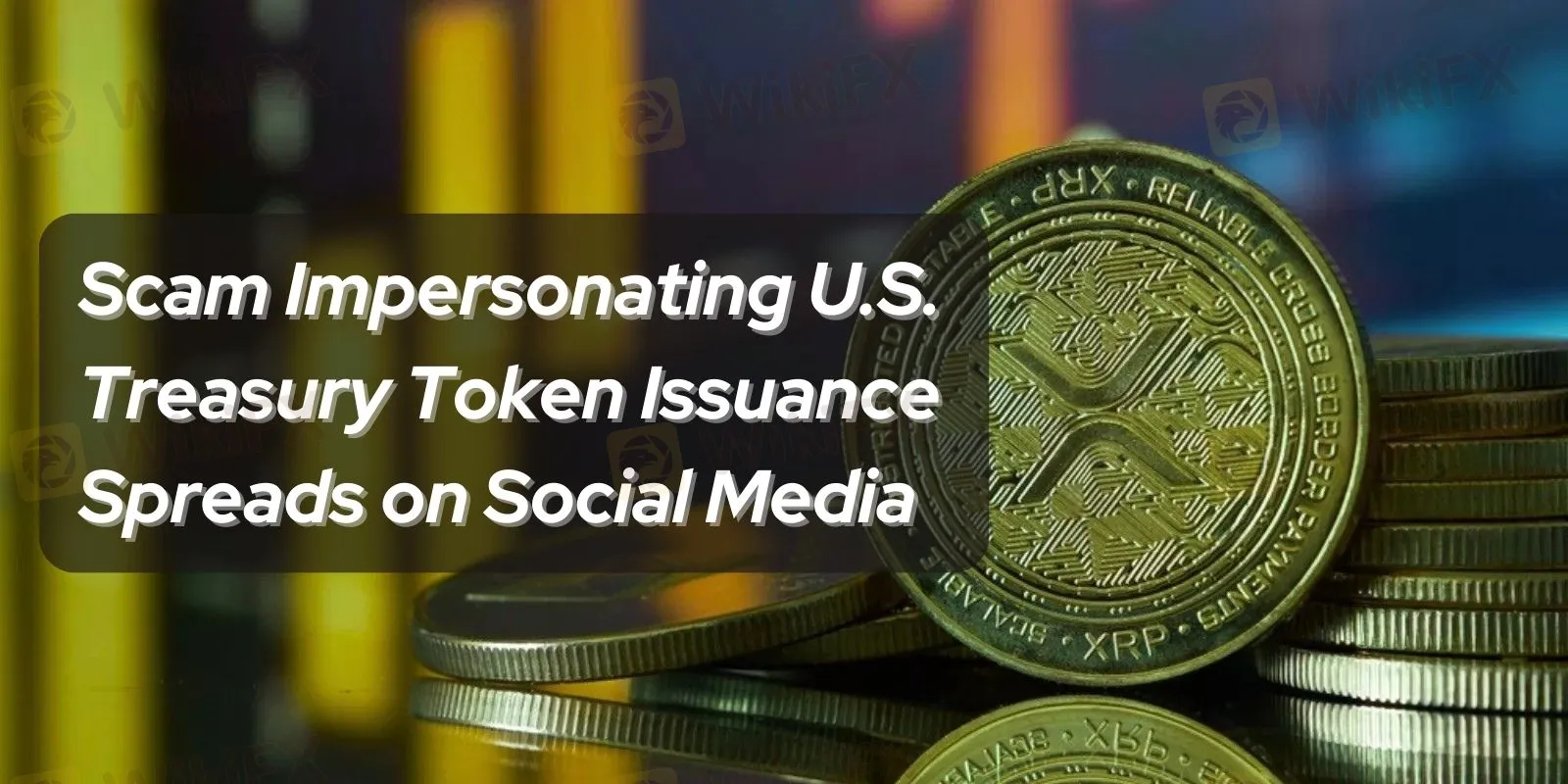Scam Impersonating U.S. Treasury Token Issuance Spreads on Social Media
Abstract:A social media scam falsely claimed the US Treasury created an XRP wallet, exploiting misinformation and targeting crypto newcomers with fabricated credibility.

In January 2025, a new social media scam surfaced, falsely claiming that the US Treasury had created an XRP wallet. Despite obvious red flags, this hoax spread rapidly across platforms like X (formerly Twitter), fueled by major accounts amplifying the misinformation. The incident underscores the vulnerability of the crypto space to scams, particularly targeting inexperienced investors.
Unpacking the XRP Wallet Scam
The scam originated from accounts allegedly based in the Philippines, where individuals impersonated the US Treasury and claimed the creation of an XRP wallet. The wallet supposedly interacted with major financial institutions like Bank of America and JPMorgan, lending an air of credibility to the hoax. However, on-chain analysis quickly revealed that the wallet was neither affiliated with the US Treasury nor based in the United States.
The timing of the scam played into existing narratives. Since former President Trump‘s endorsement of a US Bitcoin Reserve and several states pursuing their own Bitcoin reserves, some speculated that the Treasury might also explore cryptocurrency investments. Coupled with XRP’s recent price surge, these factors made the hoax appear plausible to some in the community.
Targeting Vulnerable Investors
This scam highlighted a critical issue: the susceptibility of crypto newcomers to misinformation. Reports suggest that nearly half of TRUMP meme coin holders are first-time crypto investors. Without prior experience or knowledge, many fall prey to scams that appear credible due to verified accounts or trending narratives.
Zach Rynes, a Chainlink Community Liaison, pointed out that trained eyes could easily identify the red flags. However, he noted the difficulty of combating such hoaxes in a decentralized, fast-paced environment. The scam underscores the need for robust education and vigilance within the crypto community.
Recognizing the Nature of Scams
The XRP wallet scam underscores the importance of understanding the common characteristics of crypto scams. These schemes often use fabricated connections to reputable institutions, like the US Treasury in this case, to mislead and exploit trust. Identifying such red flags and cross-checking information with official sources are crucial steps in avoiding deception.
Read more

Project Manager Loses Over RM138,000 in Shocking Investment Scam
A 37-year-old project manager lost over RM138,000 to an investment scam after being lured by promises of 20% returns. The victim was deceived by a fraudulent caller posing as a bank employee and transferred funds through 30 online transactions. The scam involved a mule account, leading to an investigation under Sections 420 and 424 of the Penal Code. Authorities urge the public to verify investment opportunities with trusted organizations to avoid similar schemes.

Breaking News: Indian Firm Defrauds UAE Businesses of ₹29 Crore Trade Scam
Indian firm defrauds UAE businesses in a ₹29 crore trade scam. Details on victims, modus operandi, and police investigations.

Vanguard Settles $106M SEC Case Over Misleading Investors
Vanguard settles $106M SEC case over misleading investors on tax impacts of capital gains in retirement funds. Learn how this affects impacted investors nationwide.

Is FizmoFX a Scam? Fraud and Account Suspension of Traders
FizmoFX is classified as an unreliable broker according to WikiFX's assessment. Learn about the stories of traders who fell victim to fraud, where their accounts were banned, and their funds were withheld. Read this article to avoid falling into the fraud trap and protect your money.
WikiFX Broker
Latest News
IG Japan Extends US Stock CFD Trading Hours in 2025
ALERT! Warning against Livaxxen
Which Zodiac Sign Makes the Best Trader?
Plus500 Collaborates with Topstep, Prop firm
Robinhood Launches Crypto Trading Services in Spain
Archax Secures FCA Approval to Oversee Crypto Promotions in the UK
CLS Global Admits to Crypto Fraud
Philippine SEC Urges Caution Regarding Ecomamoni
Become Women Brand Ambassador of Yamarkets
Naira Falls Against Dollar as Nigeria Reshapes Economic Blueprint
Rate Calc

